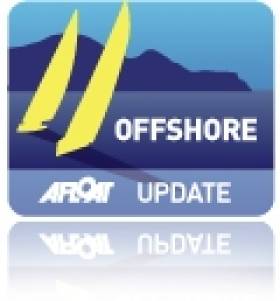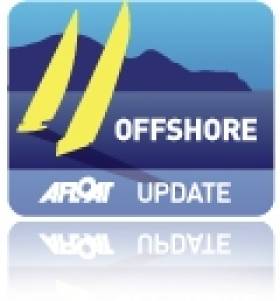Displaying items by tag: Discovery Route
Spindrift 2 Smashes Discovery Route Record
#WorldRecord - Six days, 14 hours, 29 minutes and 21 seconds: that's the new time to beat after the crew of Spindrift 2 smashed the previous Discovery route record by more than 20 hours.
The world's largest racing trimaran crossed the finish line at San Salvador in the Bahamas in the early hours of yesterday morning (6 November) after a blisteringly fast Atlantic crossing from Cadiz in Spain.
Reaching speeds of up to 46.08 knots and covering more than 714 miles last Friday 1 November alone, it was expected that the vessel skippered by Dona Bertarelli and Yann Guichard would make an impact.
But even rough seas and technical mishaps going into the final stretch didn't put much of a dent in their incredible margin, almost a full day ahead of the time set by previous record holder Groupama 3 in 2007.
And this amazing achievement will surely erase memories of Spindrift's woes in Dublin Bay over the summer.
"This is huge," said Bertarelli after confirmation of their record. "The emotion was waiting for us the moment we crossed the line. I enjoyed this race a lot; my first crossing of the Atlantic, in a race, for a record, with a good result at the end.
"Any doubts I might have had about this boat have gone. It is an extraordinary machine, and was combined with a great crew, following superb preparation made by the team on the ground and a sound choice of route."
Spindrift 2 On Standby For Discovery Route Record Attempt
#WorldRecord - The world's largest racing trimaran is on standby awaiting the right weather window to launch their attempt at the Discovery route world record.
Spindrift 2 - the successor to the trimaran skippred by Yann Guichard that met an unfortunate fate in Dun Laoghaire this summer - has been in Portimao in Portugal since 7 October waiting for the perfect conditions to mount their challenge on the Discovery route from Cadiz in southwestern Spain to San Salvador in the Bahamas.
The record for the near 4,000 nautical mile transatlantic route is currently held by Groupama 3, a Franck Cammass-skippered vessel that's part of the same team that won the Volvo Ocean Race in Galway in 2012.
Groupama 3 set a record time of seven days, 10 hours, 58 minutes and 53 seconds with an average speed of 21.7 knots in May 2007, beating the previous time set by Steve Fossett's PlayStation by almost two whole days.
Meanwhile, Guichard and co-skipper Dona Bertarelli, last seen in action in the Rolex Fastnet Race, will be waiting for the trade winds to pick up pace and the Azores high pressure system into place creating the optimum conditions to set out from Cadiz.
"Once we have rounded the Canary Islands by the right it will be a matter of fine tuning our strategy and choosing the best possible course to join San Salvador," saus Guichard.
"The options are a more northerly course, closer to the direct route, or a more southerly course, further off the direct course but presenting better conditions."
Follow the team on Twitter @spindriftracing for the latest Discovery route news.





























































